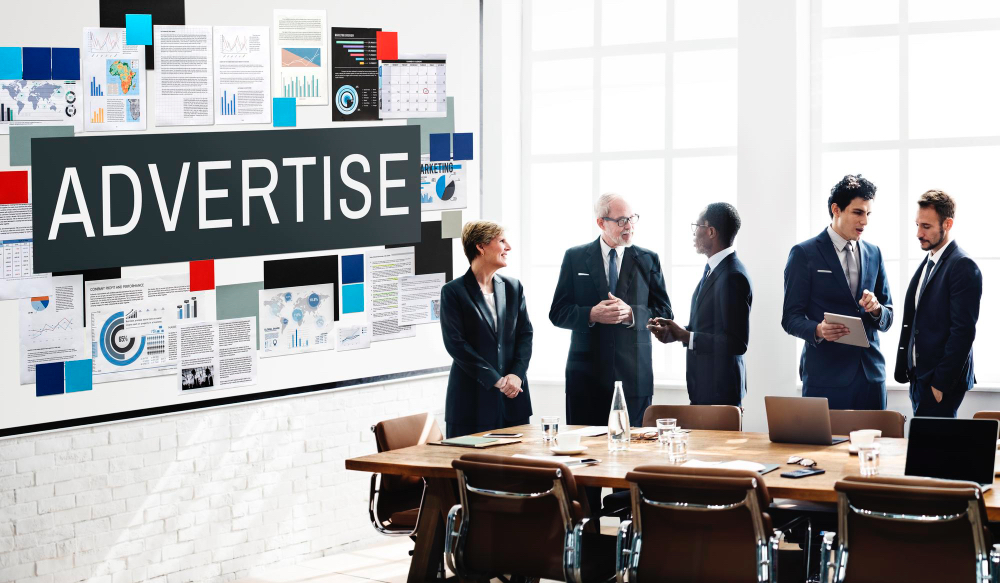
In 2025, Google Ads (formerly AdWords) remains the backbone of performance marketing for ambitious, data-led brands. The platform captures nearly 90% of all search traffic and powers over $70 billion in ad spend per quarter, proving that it’s far more than a traffic engine—it’s a growth system built on measurable intent and real-time optimization.
For founders, CMOs, and growth marketers, the challenge isn’t learning how to run ads—it’s learning how to scale them responsibly. Between AI-driven bidding, privacy-first attribution, and complex customer journeys, success depends on mastering data, creative alignment, and compliance in equal measure.
At Future Digital, we help early-stage and growth brands turn Google Ads from a cost center into a compounding growth engine—where every click contributes to lifetime value, not just short-term conversions.

AdWords marketing today covers both the Search Network, where text-based ads capture users’ intent, and the Display Network, which delivers visually engaging ads across third-party websites, apps, and YouTube. Search campaigns reach users already seeking solutions and tend to convert at 3–6% on average. Display campaigns focus on awareness, achieving lower conversion rates (around 0.5%) but at much lower cost—often under one dollar per click. When executed together, these formats form a powerful full-funnel strategy: Search captures existing demand, while Display builds awareness and nurtures new audiences.
For a deeper breakdown of channel-level ROI, see PPC Advertising Demystified: Strategies for Higher ROI in 2025.
Every Google search triggers an automated auction where advertisers compete for visibility. But winning isn’t just about who bids the most. Google’s Quality Score—rated from 1 to 10—balances cost and performance by prioritizing relevance, user experience, and expected engagement.
Three key factors determine Quality Score: ad relevance (how closely the ad matches keyword intent), expected click-through rate (CTR), and landing page experience (usefulness and transparency). The formula is simple: Ad Rank = Max Bid × Quality Score.
This means smaller brands can outperform larger competitors if their ads and landing pages deliver superior value. In 2025, Google’s algorithms also predict landing page usability and compliance before serving the ad, rewarding speed, clarity, and credibility.
Let’s talk about how data, creativity, and performance strategy can drive real growth.
Partner with Future Digital to turn insights into measurable results.
The most effective Google Ads campaigns begin with clear intent. Define measurable goals—whether driving sales, leads, or repeat purchases—and set KPIs around ROAS, conversion rate, and CAC efficiency.
Select a bidding strategy that matches your objective. Smart bidding options like Target CPA, Target ROAS, and Maximize Conversions leverage machine learning to optimize spend automatically. Manual bidding is now reserved for niche campaigns where data is limited or testing is required.
Keyword strategy is the foundation of performance. Use exact match terms for bottom-funnel buyers, phrase match for mid-funnel queries, and negative keywords to eliminate irrelevant traffic. At Future Digital, we map every keyword cluster to a conversion stage, ensuring ad spend aligns with the customer journey.
Modern ad formats like Responsive Search Ads (RSAs) test up to 15 headlines and four descriptions, allowing Google to identify the most effective combinations. The creative goal: reflect user intent, maintain strong calls to action, and build trust through clarity.
Landing pages should load fast, align perfectly with ad promises, and prioritize privacy-safe analytics. A consistent message from ad to page doesn’t just improve conversion rates—it directly boosts Quality Score and overall ROI.
AI and automation are now central to campaign management. Google’s Performance Max and Demand Gen campaigns enable full-funnel reach, using AI to interpret signals across Search, Display, YouTube, and Gmail. The key to success lies in feeding these systems accurate conversion data, high-quality creative, and first-party audience insights.
Continuous testing remains non-negotiable. Rotate ad variations, test CTAs, and refine audience targeting through exclusion and segmentation. Brands that continuously test and refine creative outperform static campaigns by double-digit margins.
Quality Score optimization should be viewed as a continuous cycle—enhancing ad relevance, improving CTR, and refining landing experiences. These factors together can lower cost per click, improve ad rank, and drive sustainable, scalable growth.
Consider a SaaS startup that implemented Smart Bidding with Target CPA on high-intent search terms. Within one month, their CTR rose to 7% and CPA fell by 18%. A DTC e-commerce brand using Performance Max campaigns saw 60% of retail clicks come from Google Shopping, achieving a 4x ROI through CRM-integrated audience signals. Even a local service company improved conversions to 9% after optimizing keyword structure and landing page quality.
Across every vertical, the same truth holds: automation only works when paired with data clarity, intent alignment, and consistent testing.
For a practical deep dive into how AI is transforming campaign performance, explore Smarter Ads: How AdWords Intelligence Is Redefining Google Ads.
AI now powers every layer of Google Ads—from copywriting and bidding to real-time creative optimization. New systems like Gemini AI and AI Mode Ads are redefining ad delivery by embedding contextual placements directly into conversational search experiences.
Yet, as automation advances, brand integrity matters more than ever. Privacy-first tracking, consent-based data collection, and transparent measurement frameworks are now central to sustainable performance. The brands that will lead the next decade are those that balance automation with strategy—leveraging data and creativity without sacrificing compliance or trust.

In 2025, mastering Google Ads isn’t about micromanaging campaigns—it’s about building systems that learn, scale, and adapt. The best-performing brands treat AdWords as a growth ecosystem, where automation, creative strategy, and data discipline converge to produce lasting ROI.
At Future Digital, we help brands design Google Ads systems that deliver measurable, compliant, and scalable growth. From creative testing to smart bidding and transparent analytics, our approach turns ad spend into predictable performance.
Ready to grow smarter?
Partner with Future Digital to build campaigns where data, creativity, and compliance come together for sustainable ROI.